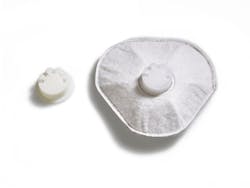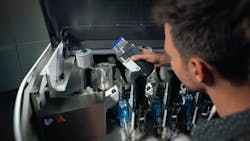Production Materials are Critical in Prototyping
At a Glance:
- Prototypes are designed to test fit, form and function.
- 3D printing offers an efficient way to create functional prototypes.
- There are advantages to using prototypes created with production materials.
Why we are Prototyping
Prototyping: a term as common to product developers and engineers as flour is to bakers. In its basic form, a prototype is a physical representation of an idea. After the idea is sketched out on paper, then designed in a CAD program, it’s time to build a prototype. Prototypes are the vehicles for designers to iterate towards perfection, allowing them to test their designs and prove out as much as possible before entering production. Errors in production are far more expensive to remedy than when fixed during the design process. Prototyping can be done through a number of methods, but the materials must match the needs.
3D Printing: Quick and Inexpensive for Prototyping
3D printing, or additive manufacturing, has become the most common method of prototyping. Printing a part is a relatively quick and inexpensive way to evaluate its design. In a 2019 industry study, 80% of enterprises said that 3D printing was enabling them to innovate faster.
There are many types of 3D printing technologies, with systems ranging from small, inexpensive desktop units to large, industrial, multi-material production units. The main differentiators are materials, build size, speed, surface finish and accuracy. Each technology has its benefits and drawbacks. To this point, no one single technology can do everything for everyone. Different technologies are implemented at different points in the design process depending on the complexity of the prototype and the testing methods.
The Main Functions of Prototyping
If you are a designer or an engineer, or sit near one, you have heard the term Fit-Form-Function testing. These are the three main characteristics prototypes are designed to test:
Fit. The ability of the part to connect, mate or join to another part within an assembly.
Form. The characteristics of a part such as external dimensions, weight, size and visual appearance. Ergonomics are often included in this category.
Function. The action or actions the part has been designed to perform.
To test different characteristics, different versions of a prototype may be needed. Different versions could consist of models made from different technologies or materials. For example, to test the fit of two parts, a basic ABS (acrylonitrile butadiene styrene) model may work. However, that same model will not be sufficient when testing the ergonomics of an over-molded section of the design.
To test that section, a multi-material model with rigid and soft materials is necessary. With all of the 3D printing technologies available one would assume we can complete all our Fit-Form-Function testing with printed models. However, some companies will argue that is not possible.
Traditional Methods and Their Advantage
Before 3D printing was mainstream, companies relied on machining or injection molding using soft tooling to produce prototypes. Compared to printing, these technologies are commonly viewed as slower and more expensive. However, 3D printing advocates argue that using these methods will add unnecessary time and cost to the design cycle. Many companies still use these methods because of the major advantage: a model created in their production material.
How Important are Materials When Prototyping?
While a basic 3D-printed model can be used to analyze Fit-Form-Function characteristics, some of the finer points may be missed. This is where a model created in production materials can shine. Let’s re-examine our Fit-Form-Function testing.
Fit. Different materials will have different properties. When analyzing the assembly of two parts it’s important the prototype’s material bends and flexes in the same manner as the production part. For example, a printed part in ABS will not have the same flex as a part molded in polypropylene. Is it possible the prototype’s material may act differently enough when testing to cause an error in production?
Form. Designers invest a lot of time picking the right materials for their parts. The aesthetics, feel and flexibility of the materials may be critical to proper usage or its appeal over a competitor’s product. When showcasing a part to the marketing team the look and feel are important. Imagine a product’s handle designed in two materials with flexible features to reduce user fatigue. A single-material rigid model will not show off this thoughtful design properly. As a result, the marketing team may not understand the design and the project is scrapped for something else.
Function. This is the most obvious of the three. Depending on the types of functional testing that will be performed, a prototype in the wrong material can range from useless to dangerous. Functional testing methods can include:
- Basic function: Does the assembly work as designed?
- Destructive testing: Will the part pass testing for environmental, fatigue, mechanical or stress? These are just some of the different types.
- Drop testing: Is the part durable enough as designed?
- User testing: Some companies choose to create fully functional designs and give them to customers for testing and review.
It’s simple to understand why the correct materials should be used for these tests. The wrong material will provide false data.
While it may not be necessary for the production material to be used in every aspect of testing for Fit-Form-Function, there are certainly tests that require the prototype be made with the correct materials.
Hidden Advantages of Prototyping in Production Materials
Beyond creating accurate testing data, there are some additional benefits to using production materials for your prototypes. These are benefits that designers may not consider because they solve challenges often handled by the production department.
Material choice/procurement. Designers typically choose their materials, but the procurement is done by production. Some suppliers can take up to 14 weeks to fulfill a material order. If a material is validated earlier in the design process, it allows the production team to order material long before part ownership is transferred to them. In this scenario, the production team saves weeks of waiting on material and starts manufacturing ahead of schedule.
Validate a manufacturing process. Another way these prototypes can assist the production team is to validate a specific manufacturing process. One example is of an air filter for a PPE mask. The exhaust valve is a rigid material and the filter is fabric. The manufacturing engineers had the idea to sonically weld the filter to the exhaust valve. By prototyping the exhaust valve in the PC-ABS material they intended to use in production, they were able to validate the sonic welding process and start setting up the manufacturing cell before the mold was ready.
3D Printing with Production Materials
It’s clear that there are many advantages to using prototypes created with production materials. Should companies surrender to using these traditional methods as the only way to get prototype parts in their production materials?
Smart companies are going to look for a way to get 3D-printed models in their own production material. As an example, one 3D-printing technology, called APF (Arburg Plastic Freeforming) uses injection molding grade pellets/granulates as the base printing material. A user can load their own production materials, configure the material profile and print. This technology has two main advantages:
- More accurate testing models. Using the correct material makes testing more accurate. It’s true that 3D-printed parts are not identical to injection-molded parts. The densities can vary, but if the differences are known, a simple correction factor can be applied to get accurate testing. These printed models will be more accurate for testing than other printing technologies and done at a fraction of the cost of machined or molded parts.
- Low-volume production is an option. Assuming the technology’s surface finish and accuracy are sufficient for your design, printing in production materials opens the doors for low-volume production opportunities. Organizations can take advantage of on-demand and on-location production.
Enhancing Production Readiness
3D-printed prototypes are a quick and inexpensive way to evaluate a design, with many technologies available to help designers iterate and efficiently move through the design cycle. While it’s common for designers to use several different technologies depending on their testing requirements, 3D printing in production materials can help avoid costly mistakes and add new insights to production readiness. By not sacrificing on materials, an organization can take their prototyping to a new level.
Gerald A. Berberian is national sales manager – additive at Arburg, Inc.



